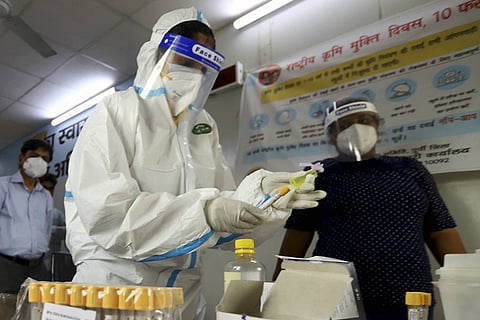

A lot has been said about the use of face covers and masks since the onset of the pandemic. But just how effective are masks in preventing germ-carrying particles from one’s nose or mouth from spreading? A new video released by researchers at a university in Florida, USA, demonstrated this in a simulation.
The video shows how the use of masks and face covers prevents the transmission of the SARS-CoV-2 virus which causes COVID-19, as well as what kind of material works best in a mask to minimise the spread.
The researchers, who are from Florida Atlantic University's College of Engineering and Computer Science, published their findings in the Journal of Physics of Fluid. They were able to demonstrate how many viral particles are transmitted when someone coughs or sneezes. They used a mixture of distilled water and glycerine to visualise the particles released via cough and sneeze droplets. The researchers used a mannequin which would stimulate coughing and sneezing during which the mixture was expelled.
The scientists tested masks made of a variety of easily available materials, ranging from single-layered cloth mask, to a dual layer home-made mask which was made by stitching two layers of cotton quilting fabric, and a non-sterile cone style mask. Each of these masks were placed on the mannequin at different times, and the researchers were able to visualise the droplets’ paths when the mannequin was made to simulate a cough. The researchers thus determined which masks were curtailing the spread of the droplets the most.
At the end of the demonstration, results showed that “loosely folded facemasks and bandana-style coverings” were somewhat effective in stopping respiratory droplets. Well-fitted homemade masks made of multiple layers of quilting fabric and the cone-style masks were found to be the most efficient. Droplets from the cough spread only about two inches and around eight inches from the mouth when the mannequin had the cotton and the cone style masks on respectively.
“These masks were able to curtail the speed and range of the respiratory jets significantly, albeit with some leakage through the mask material and from small gaps along the edges,” read the findings of the experiment reported by the researchers.
"In addition to providing an initial indication of the effectiveness of protective equipment, the visuals used in our study can help convey to the general public the rationale behind social-distancing guidelines and recommendations for using facemasks," said Siddhartha Verma, Ph.D., lead author and an assistant professor who co-authored the paper.